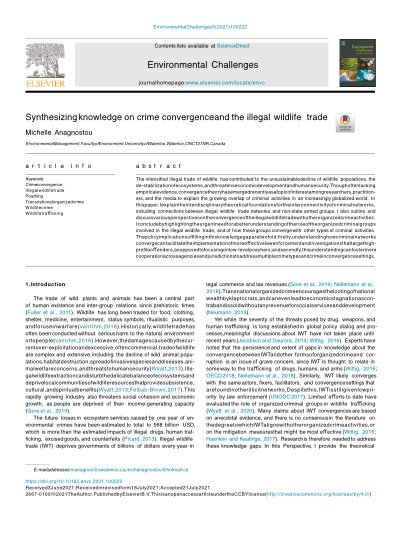By Meredith L. Gore , Robert Mwinyihali , Luc Mayet Gavinet Duclair, Makaya Baku-Bumb , etc.
Urban wildmeat consumption can contribute to significant declines in wildlife populations, ecosystem function, and food insecurity security. Describing types of individuals involved in illegal urban wildmeat trafficking can help distinguish ordinary citizens from members of criminal organizations and urban vs. rural dimensions of the activity. This research aimed to: (1) create and apply a typology for urban wildmeat traffickers and sellers; and (2) explore linkages between types of urban wildmeat traffickers and sellers. We used focus groups with experts in the Republic of the Congo, February 2019 (N = 2, n = 7–10) to achieve objectives and focused on pangolins, great apes, and dwarf crocodiles. Participants generated risk rankings for each species, typology and city; data was encoded and indexed. Results illustrate heterogeneity in actors involved in the illegal supply chain. Business sideliner and trading charity trafficker types were associated with the highest total risk to wildlife trafficking. A similar pattern of divergence was detected for seller typologies; hidden and casual sellers were associated with the greatest total risk in Pointe Noire and Brazzaville, respectively. Differentiating but not stove piping stakeholders involved in urban wildmeat trafficking will help clarify stages of illegal supply chains as well and promote thinking about new sectors to involve in interventions and solutions, particularly in urban ecosystems thought to be outside the scope to wildlife crime.
Global Ecology and Conservation. Volume 27, June 2021, e01557





















